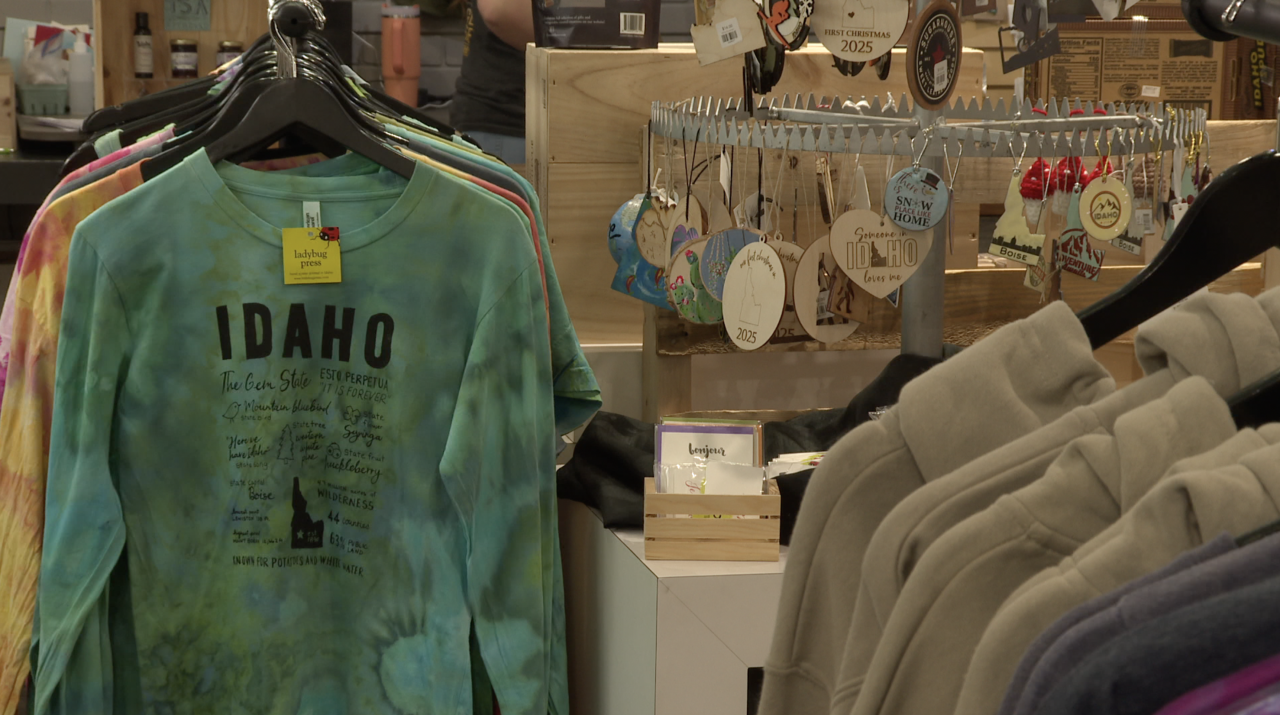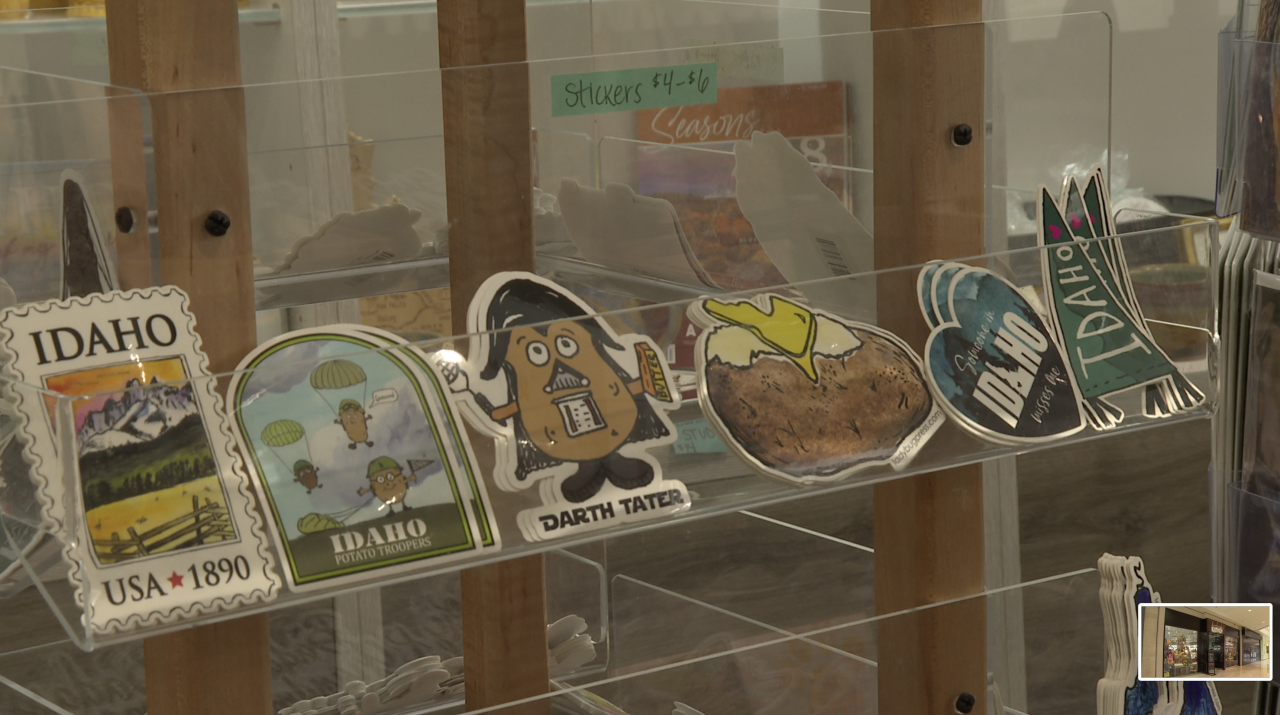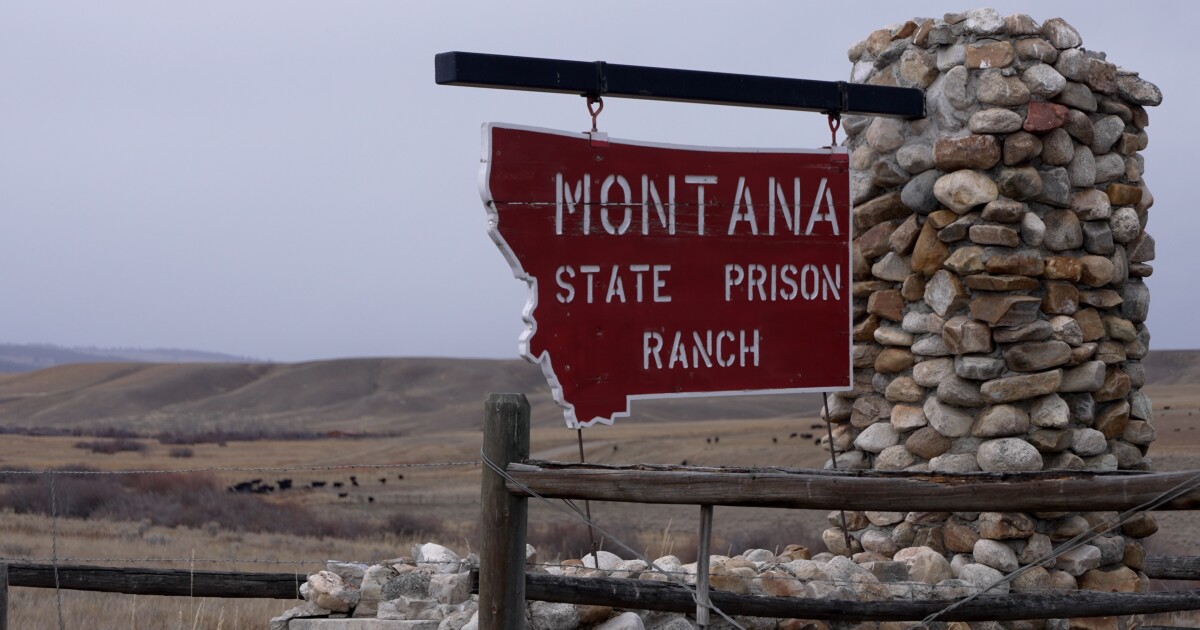Idaho
Fire lookouts have a long history to help fight wildfires in Idaho

BOISE, Idaho — The Boise National Forest continues to use fire lookouts today as they have around eight staffed lookouts during wildfire season, these lookouts have also played a pivotal role in the history of fighting wildfire.
The story begins in 1908 when the Boise National Forest service started. A forest supervisor was walking towards a wildfire when he ran into Harry Shellworth who was working for the Boise Payette Lumber Company.
“At that time they both saw the need to defend our wild areas from fire. They set up a gentlemen’s agreement and it spurred on the Southern Idaho Timber Protective Association.”
Virginia Clifton, a historian and archeologist with the Boise National Forest.
This partnership would build the first fire lookout in the area in 1908 on top of Bald Mountain, today it is called the Thorn Creek Lookout.

“It has been rebuilt, it is still standing and it is staffed. For the most part we have rebuilt a lot of our lookouts since the 1930s since the Civilian Conservation Corps came about.”
Clifton
The CCC was established by President Franklin D. Roosevelt in 1933 as a means to get out of the great depression. Harry Shellworth saw an opportunity and went to Washington D.C. to advocate for CCC funding in Idaho.

“Behind California Idaho was the most densely populated with CCC folks and CCC camps,” said Clifton. “With that came a lot of construction of lookouts.”
The Shafer Butte Lookout had already been built in 1925, but the Quartzfire of 1931 ended up scorching much of the Boise Boise. The Civilian Conservation Corps went to work building the Boise Ridge Road as a fire break and for another access point to the lookout.

It’s still standing on top of what is now Bogus Basin Ski Resort. In total there were 163 CCC camps in Idaho with 20,000 people working on a variety of projects including lookouts that were now located all over Idaho on the top of mountain peaks.
“I think part of the reason why Idaho has a history of so many lookouts across the entire state and not just the Boise National Forest is because of our terrain. Our terrain is so steep and so rugged that it makes communications with fire managers outside of lookouts a lot more challenging.”
Clifton

Fire lookouts have always been the best way to catch a wildfire when it’s small. New technology has emerged including cameras and artificial intelligence to detect smoke, but people still man some of the lookouts in the Boise National Forest.
Many of the lookouts have been rebuilt from their earlier days while some like the Deadwood Lookout is available for people to rent out and stay in. That lookout earned a designation on the National Register of Historic Places, it’s also under threat right now from the Nellie Fire.

Idaho also has others that qualify for that designation like the Danskin Peak Lookout built in 1941 and Virginia Clifton is working to help preserve these historic lookouts.
“It’s been my goal since I started with the Boise National Forest in 2016. I want to get all of our lookouts recorded and documented, not all of them are and we need to get all of them evaluated for the National Register of Historic Places.”
Clifton

If you want to learn more about how lookouts work and the value they provide here is a story we did on the Danskin Lookout.

Idaho
Handmade Idaho brings local artisans together under one roof at Boise Towne Square

BOISE, Idaho — What started as a holiday pop-up has transformed into a year-round celebration of Idaho creativity, bringing together the best local makers all in one convenient location.
Handmade Idaho, located at 350 N Milwaukee St Ste 1141 on the lower level of Boise Towne Square Mall, showcases goods from small artisans across the Gem State.
Handmade Idaho brings the best of local artisans to you.
Handmade Idaho brings local artisans together under one roof at Boise Towne Square
Owner Angela Stewart says the business grew out of a need to support local creators.
“We started as an organization to provide more opportunities for local artisans to sell their goods. So we had a holiday show for several years, and then COVID hit, and we had to cancel,” Stewart said.
After the pandemic forced cancellation of their holiday show, Stewart opened pop-up shops at The Village and later at Boise Towne Square Mall. The mall convinced her to return full-time, and she’s been operating there since 2022.
The permanent location allows customers to shop from local artisans seven days a week. Stewart accepts new makers through an online application at HandmadeIdaho.com.
“We still feature like local artisans from all over Idaho, but now, you know, people can shop them 7 days a week instead of just during the holidays,” Stewart said.
Inside the store, huckleberry items are particularly popular since it’s the state fruit.
Greenlee Clark / Idaho News 6
“We have everything Idaho huckleberry you can imagine, from soap to edible things, to tea towels,” Stewart said.
The store also features potato-themed products, including chips, soup mix, and bread mix, along with sweet treats, unique jewelry, apparel for all ages, hats, candles, glassware, and mugs. Some items are printed right in the shop, and apparel goes up to 3XL on many designs.
Greenlee Clark / Idaho News 6

The store’s most popular offering is custom and ready-to-go gift boxes available in three different sizes. Pre-made options include huckleberry-themed boxes, spud boxes, kitchen boxes, and spa boxes.
“You can pick all the goods you want, we’ll make it fit in a box, and we can ship it, or you can take it with you, but this is like a really ideal fun gift,” Stewart said.
For uncertain shoppers, Stewart offers guidance.
“If you’re buying a gift for somebody and you don’t know what they like, food is always a hit,” Stewart said.
About 90% of the inventory is available online, but the remaining 10% consists of one-of-a-kind items made by different artisans. The business also specializes in corporate gifting and helps customers with Secret Santa and white elephant gifts.
Greenlee Clark / Idaho News 6

“People come in here all the time. I don’t know what to get, and they just give us a budget, we’ll figure it out for you,” Stewart said.
Stewart, who also owns Ladybug Press and features those products in the store, emphasizes the community impact of supporting small businesses.
“When you shop our store, you’re helping your neighbors, you’re helping people in our actual community, and I think that, you know, that’s a really huge thing to be able to like vote with your dollars,” Stewart said.
Handmade Idaho is open seven days a week at 350 N Milwaukee St Ste 1141 on the lower level of Boise Towne Square Mall, with online shopping available at HandmadeIdaho.com.
Idaho
Charges dropped against BYU-Idaho student accused of kidnapping baby at Costco – East Idaho News

Bonneville County Prosecutor Randy Neal describes a new video from Costco over the incident involving an alleged kidnapping prior to Thanksgiving. | Daniel V. Ramirez, EastIdahoNews.com
IDAHO FALLS — Weeks after a BYU-Idaho student was accused of kidnapping a baby from Costco, the Bonneville County Prosecutor announced Thursday afternoon that charges will be dismissed.
During a news conference, Prosecutor Randy Neal showed three videos from inside Costco during the alleged incident on Nov. 24, which led to Michael Raine, 24, being charged with felony second-degree kidnapping.
According to court documents, Raine was looking at books inside the store and a cart with a baby was nearby.
RELATED | BYU-Idaho student accused of kidnapping 4-week-old baby in Costco
The document states that Raine “looked around” and then grabbed the cart and walked away.
The issue for officials was what occurred once Raine rounded the corner with the cart and the baby.
Neal said the new video shows Raine walking away with the cart, and the baby’s mother finding him almost immediately. The prosecutor explained that when pursuing cases, a prosecutor reviews the evidence and determines whether, beyond a reasonable doubt, the action was a crime.
“For a prosecutor, the analysis is whether there is a rational basis for someone to conclude, beyond a reasonable doubt, that they are to a moral certainty, that this is a crime? I don’t think that we can say that,” Neal said.
Neal said the surveillance videos from Costco show that Raine had no intention of running away with that cart.
WATCH COSTCO SURVEILLANCE VIDEO HERE:
The other aspect is that Raine didn’t leave the store after the incident, which, according to the documents, indicates the student had purchased items and eaten at the food court.
Looking at the reasons for Raine’s arrest, Idaho Falls Police Chief Bryce Johnson said at the time, there was only one single video, and based on what was seen, Raine’s actions were found to be suspicious.
Another factor that influenced Raine’s arrest was his trip to the United States Marine Corps Recruiting station in Boise on Nov. 25.
“The detectives were consulting with the prosecutors and made the proper decision at that time in the interest of public safety, based on probable cause, to make that arrest,” Johnson said. “That just doesn’t end the case. There’s a requirement to keep on going.”
Johnson and Neal discussed how detectives met with the mother of the baby and went over the events in a cognitive interview. Neal said this type of interview is a narrative recount of the events by the victim, without any questions being asked.
“Often, the mind will just start filling in pieces in order to make it make sense to them,” Neal said.
Detectives worked on recreating the incident at Costco with the mother, but Neal said some of the mother’s version of events were inaccurate in terms of the cart placement and other minor details.
Neal said Natalie Millett was told charges have been dropped.
In a statement to the media, Millett said the event has caused the emotional pain that words can’t describe and will impact her for life.
“I believe it was miraculous that I ran in the right direction and recovered my baby swiftly, but the outcome could have been so different had I not listened to my intuition and impressions that day,” Millett said.
After being informed that the charges against Raine would be dismissed, Millett stated that she does feel at peace because she has done everything in her power.
One of the major talking points of the conference and in Millett’s statement is the reaction and comments from social media that have attacked her and made egregious remarks about people involved.
“To sit in your basement and write poison is just really disgusting. It’s just inappropriate,” Neal said.
=htmlentities(get_the_title())?>%0D%0A%0D%0A=get_permalink()?>%0D%0A%0D%0A=htmlentities(‘For more stories like this one, be sure to visit https://www.eastidahonews.com/ for all of the latest news, community events and more.’)?>&subject=Check%20out%20this%20story%20from%20EastIdahoNews” class=”fa-stack jDialog”>
Idaho
Drivers urged to exercise caution amid potential flooding in North Idaho

BOISE, Idaho (CBS2) — The Idaho Transportation Department (ITD) is warning drivers in North Idaho to be vigilant as rising water levels from recent rainfall and runoff may lead to roadway flooding and washouts.
ITD crews are actively monitoring the situation and are prepared to respond as conditions change. Drivers are advised to exercise extra caution, particularly in lowland areas, where conditions can shift rapidly. ITD strongly recommends against driving through standing water, as it can be difficult to gauge its depth or identify hidden hazards. Water intake can also cause significant damage to vehicles. For updates on detours and road closures, drivers are encouraged to visit Idaho 511.
-

 Alaska6 days ago
Alaska6 days agoHowling Mat-Su winds leave thousands without power
-
Ohio1 week ago
Who do the Ohio State Buckeyes hire as the next offensive coordinator?
-

 Texas6 days ago
Texas6 days agoTexas Tech football vs BYU live updates, start time, TV channel for Big 12 title
-

 Washington3 days ago
Washington3 days agoLIVE UPDATES: Mudslide, road closures across Western Washington
-

 Iowa5 days ago
Iowa5 days agoMatt Campbell reportedly bringing longtime Iowa State staffer to Penn State as 1st hire
-

 Miami, FL6 days ago
Miami, FL6 days agoUrban Meyer, Brady Quinn get in heated exchange during Alabama, Notre Dame, Miami CFP discussion
-

 Cleveland, OH5 days ago
Cleveland, OH5 days agoMan shot, killed at downtown Cleveland nightclub: EMS
-
World5 days ago
Chiefs’ offensive line woes deepen as Wanya Morris exits with knee injury against Texans























